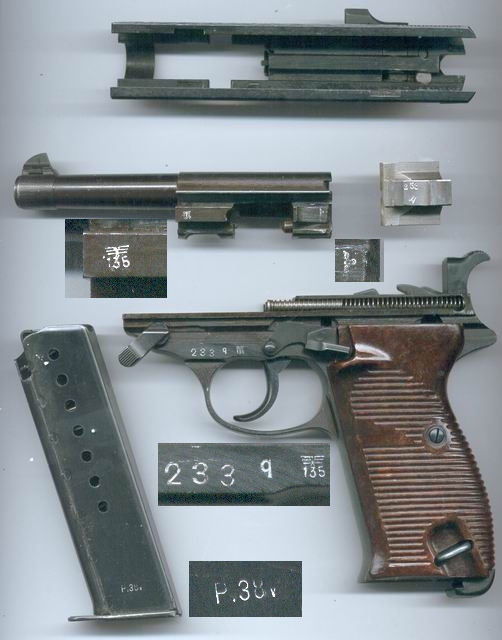- Author: admin
- Category: Category


Sep 26, 2011 The serial numbers on the P.38s only reached the 4-digit range after the three-digit range was completed. From 100 straight up to 999. You are used to seeing four-digit serial numbers on these pistols because there are far more many of them than there are the three-digit guns, or the two-digit guns, or the single-digit guns. Walther and Luger were the handgun providers to the German Army in World War II. Mauser-produced P38s were stamped BYF. Followed by the date, while. To identify P38 serial numbers, reference a P38 serial number listing, such as the.
The Walther P38 was a pistol that was developed by as the of the at the beginning of. It was intended to replace the costly, the production of which was scheduled to end in 1942. This is a 9mm Parabellum (9mmx19mm;same as Luger) with a magazine capacity of 8 rounds. The overall length is 216mm and the barrel length is 125mm. The gun weighs 800 grams empty.
(1379) Photographs are copyrighted, all rights reserved, any extraction, reproduction or display of gun pictures without the express consent of the Phoenix Investment Arms is strictly prohibited. Thank you for your cooperation. The 0-Series was the first official P.38 variation issued to the German army. This variation is produced between June 1939 and may 1940. Serial numbers of this variation always start with a 0, hence the name 0-Series.

Determination of a 0-Series pistol is easy. The Walther banner and P.38 model indication are stamped on the left side of the slide with the serial number next to it. All parts of the 0-Series pistols are stamped with the Walther acceptance stamp E/359 The Bakelite grips are black checkered and have a round loophole for the lanyard. Most of the P.38 pistols produced after this variation have rectangular loopholes. Magazines are stamped on the housing with the respective serial number and spare mags have an additional + in front of the serial number. This is an original WWII German Walther built P-38 '0' series test gun built in 1939. It has all matching numbers on frame, slide and barrel.
Free download game pc strategi perang kerajaan islam 1. All E355 code Waffenampts are good. Bluing is very good to excellent. A '0' Serial Pre-WWII issue and it is in excellent condition. No import marks. Grips are black bakelite. Bore and rifling is excellent. A very nice example of an original Walther Banner WWII P-38 Test Series.
All production was performed at the Walther plant until mid- to late 1942 when additional production began at the plant in Oberndorf (code 'byf' until early 1945, then 'svw') and at the Spreewerk plant in Hradek and Nisou, ('cyq'). Production continued until the end of the war and into the post war period. This P38 production is estimated to have been produced in numbers nearly a million. The P38 concept was accepted by the military in 1938 but production of the actual prototype ('Test') pistols did not start until late 1939. Walther began manufacturing at their plant in Zella-Mehlis and produced three series of 'Test' pistols, designated by a '0' prefix to the serial number. The third series satisfied the previous problems and production for the Heer ( ) began in mid-1940, using Walther's military production identification code '480'. After a few thousand pistols the Heer changed all codes from numbers to letters and Walther was given the 'ac' code.
The P38 is a recoil-operated, locked breech design with a vertically tilting blocking bar that connects the 4.9 inch moving barrel and the slide. The P38 has a short, open top slide. A locking wedge under the barrel holds the slide and barrel together during recoil. When the wedge reaches the limiting point against the frame, it drops down, releasing the slide to return to its forward, locked position for the next round. The trigger is double-action, with an exposed hammer and trigger bar (the link between the trigger and sear) unusually located outside of the frame at the right side. This was the first DA military handgun, a design pioneered by Walther with the PP and PPK.
The slide catch is on the left side of the frame. The catch for the 8-round magazine is located at the bottom of the grip. There is a post front sight and notch rear sight. The standard safety also acted as a de-cocker, and was located at the left side of the slide. The frame and slide are all-steel while the grip plates are plastic. The Walther P38 could be dissembled easily and had multiple safety features.
Search
Top News